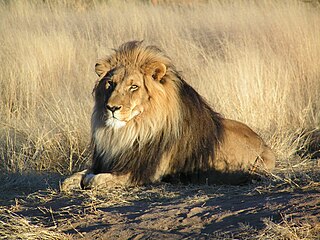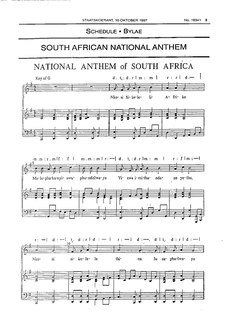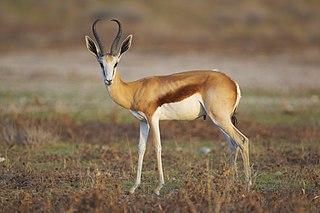 W
WSince unification in 1910, South Africa has used a range of national symbols to identify the country: coats of arms, official seals, flags, national anthems, and floral, bird, animal, and other emblems.
 W
WThe blue crane, also known as the Stanley crane and the paradise crane, is the national bird of South Africa. The species is listed as Vulnerable by the IUCN.
 W
WThe Castle of Good Hope known locally as the Castle or Cape Town Castle is a bastion fort built in the 17th century in Cape Town, South Africa. Originally located on the coastline of Table Bay, following land reclamation the fort is now located inland. In 1936 the Castle was declared a historical monument and following restorations in the 1980s it is considered the best preserved example of a Dutch East India Company fort.
 W
WThe present coat of arms of South Africa was introduced on Freedom Day 27 April 2000 and designed by Mr Iaan Bekker. It replaced the earlier national arms, which had been in use since 1910. The motto is written in the Khoisan language of the ǀXam people and translates literally to "diverse people unite". The previous motto, in Latin, was Ex Unitate Vires, translated as "From unity, strength".
 W
WThe coat of arms of South Africa between 1910 and 2000 was granted to the Union of South Africa by King George V and later amended by the British College of Arms. It contained representation of the four provinces within the Union. The coat of arms was later retained by the Republic of South Africa for a period until the end of apartheid in 1994. The 1910 coat of arms was replaced in 2000 by a more Africanised coat of arms of South Africa.
 W
WDie Stem van Suid-Afrika, also known as "The Call of South Africa" or simply "Die Stem", is a former national anthem of South Africa. There are two versions of the song, one in English and the other in Afrikaans, which were in use early on in the British-governed Union of South Africa alongside God Save the Queen and as the sole anthem after South Africa declared its independence. It was the sole national anthem from 1957 to 1994, and shared co-national anthem status with "God Save the King/Queen" from 1938 to 1957. After the end of apartheid in the early 1990s, it was retained as a co-national anthem along with "Nkosi Sikelel' iAfrika" from 1994 to 1997, when a new hybrid song incorporating elements of both songs was adopted as the country's new national anthem, which is still in use.
 W
WThe flag of South Africa was designed in March 1994 and adopted on 27 April 1994, at the beginning of South Africa's 1994 general election, to replace the flag that had been used since 1928.
 W
WThe galjoen, black bream, or blackfish is a species of marine fish found only along the coast of southern Africa from Angola to South Africa. Galjoen is the national fish of South Africa.
 W
WThe lion is a large cat of the genus Panthera native to Africa and India. It has a muscular, deep-chested body, short, rounded head, round ears, and a hairy tuft at the end of its tail. It is sexually dimorphic; adult male lions are larger than females and have a prominent mane. It is a social species, forming groups called prides. A lion's pride consists of a few adult males, related females, and cubs. Groups of female lions usually hunt together, preying mostly on large ungulates. The lion is an apex and keystone predator; although some lions scavenge when opportunities occur and have been known to hunt humans, the species typically does not.
 W
WThe National Anthem of South Africa was adopted in 1997 and is a hybrid song combining new English lyrics with extracts of the 19th century hymn "Nkosi Sikelel' iAfrika" and the Afrikaans song "Die Stem van Suid-Afrika", which was used as the South African national anthem during the apartheid era. The committee responsible for this new composition included Anna Bender, Elize Botha, Richard Cock, Dolf Havemann (Secretary), Mzilikazi Khumalo (Chairman), Masizi Kunene, John Lenake, Fatima Meer, Khabi Mngoma, Wally Serote, Johan de Villiers, and Jeanne Zaidel-Rudolph.
 W
W"Nkosi Sikelel' iAfrika" is a Christian hymn originally composed in 1897 by Enoch Sontonga, a Xhosa clergyman at a Methodist mission school near Johannesburg.
 W
WPodocarpus latifolius is a large evergreen tree up to 35 m high and 3 m trunk diameter, in the conifer family Podocarpaceae; it is the type species of the genus Podocarpus.
 W
WProtea cynaroides, also called the king protea, is a flowering plant. It is a distinctive member of Protea, having the largest flower head in the genus. The species is also known as giant protea, honeypot or king sugar bush. It is widely distributed in the southwestern and southern parts of South Africa in the fynbos region.
 W
WThe secretarybird or secretary bird is a large, mostly terrestrial bird of prey. Endemic to Africa, it is usually found in the open grasslands and savanna of the sub-Saharan region. John Frederick Miller described the species in 1779. Although a member of the order Accipitriformes, which also includes many other diurnal birds of prey such as kites, hawks, vultures, and harriers, it is placed in its own family, Sagittariidae.
 W
WThe springbok is a medium-sized antelope found mainly in southern and southwestern Africa. The sole member of the genus Antidorcas, this bovid was first described by the German zoologist Eberhard August Wilhelm von Zimmermann in 1780. Three subspecies are identified. A slender, long-legged antelope, the springbok reaches 71 to 86 cm at the shoulder and weighs between 27 and 42 kg. Both sexes have a pair of black, 35-to-50 cm (14-to-20 in) long horns that curve backwards. The springbok is characterised by a white face, a dark stripe running from the eyes to the mouth, a light-brown coat marked by a reddish-brown stripe that runs from the upper fore leg to the buttocks across the flanks like the Thomson's gazelle, and a white rump flap.